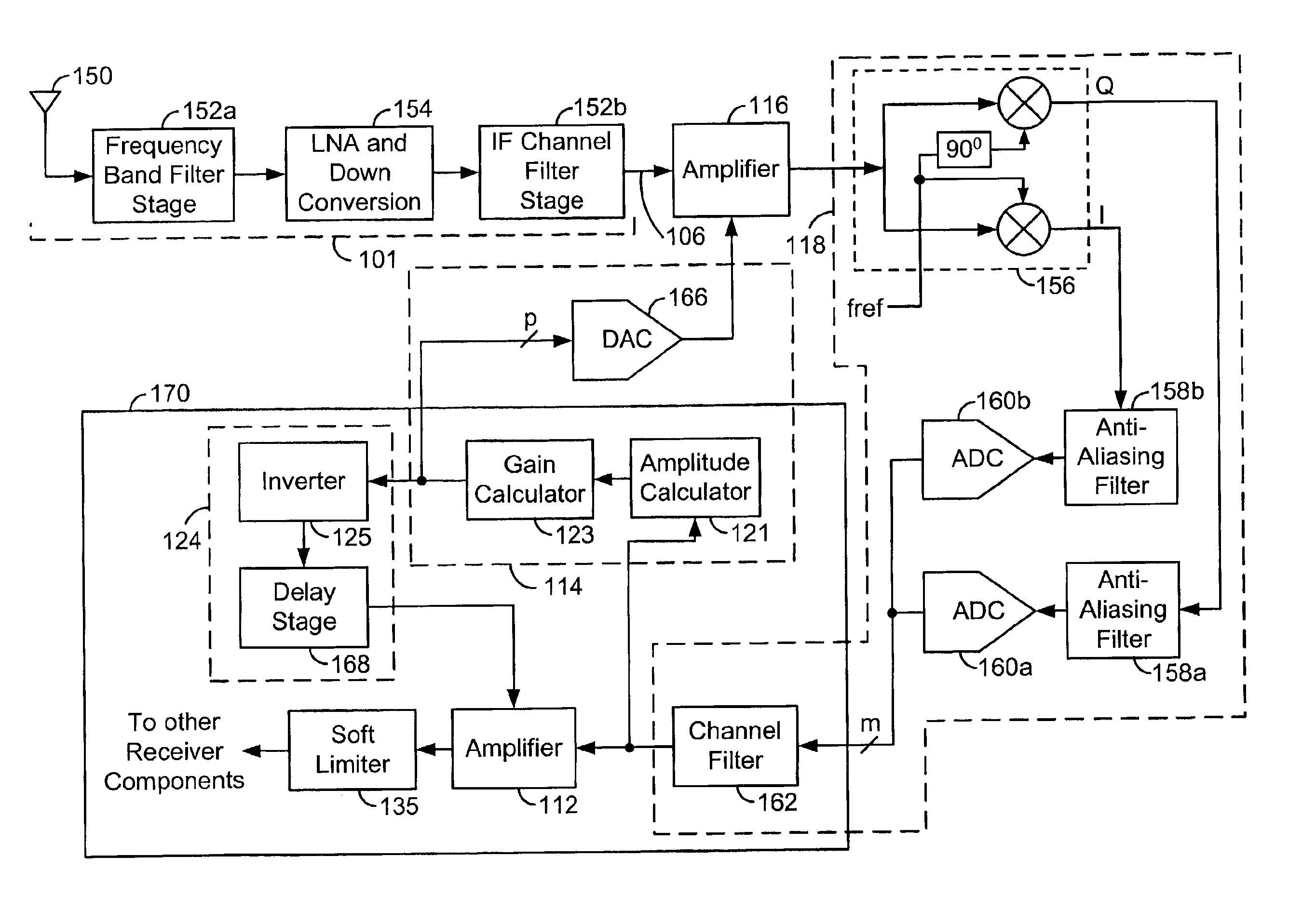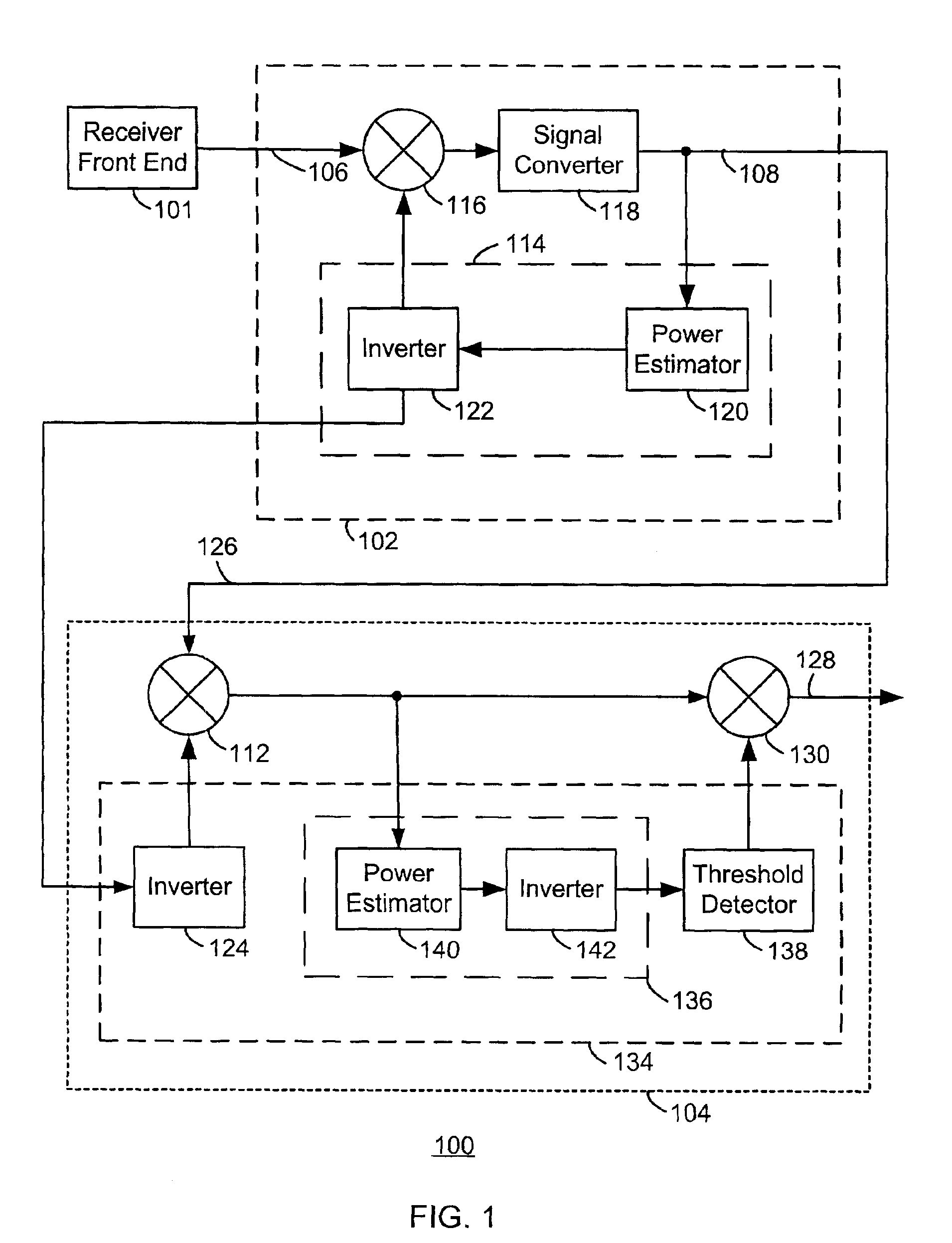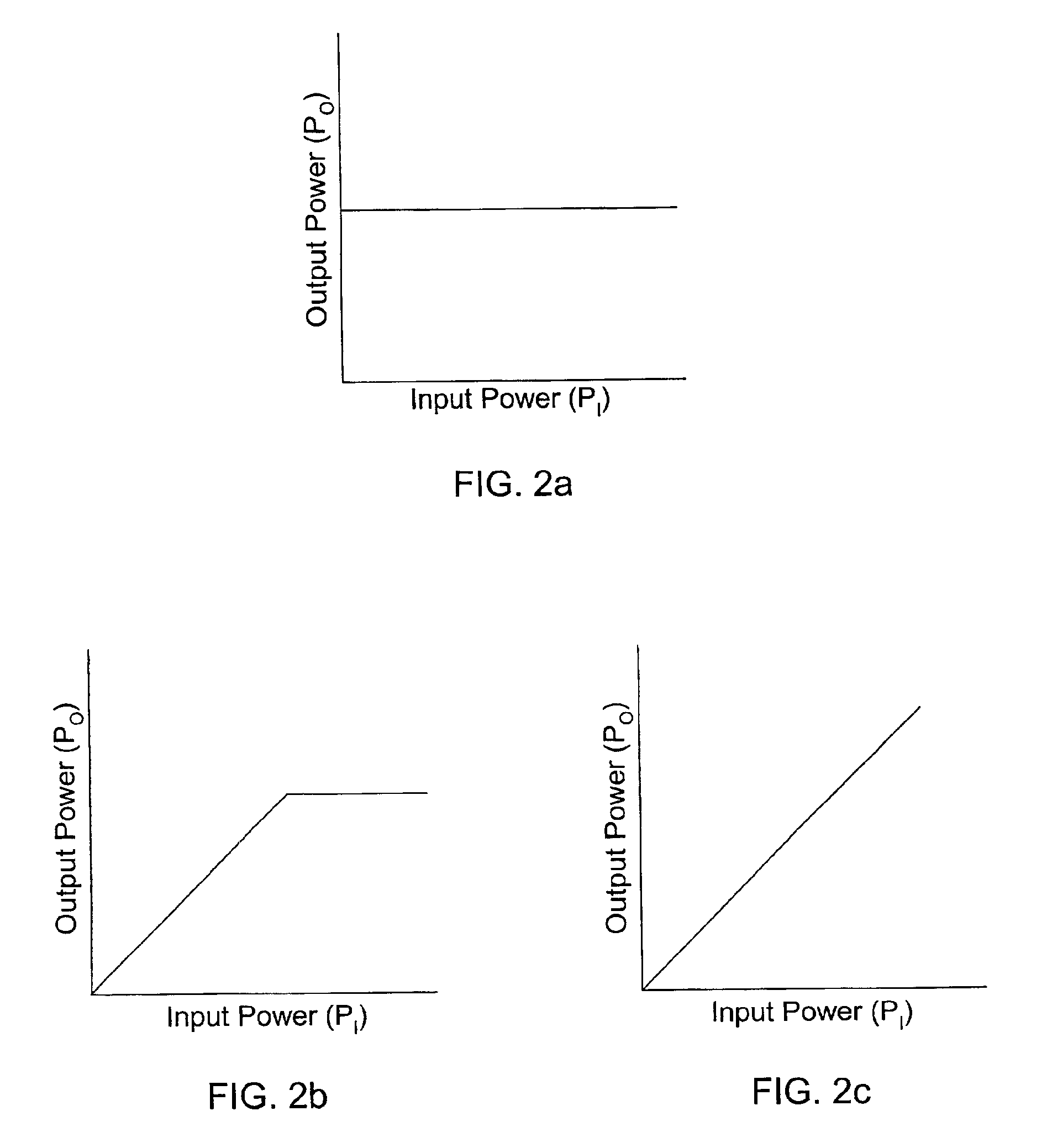System and method for inverting automatic gain control (AGC) and soft limiting
- Summary
- Abstract
- Description
- Claims
- Application Information
AI Technical Summary
Benefits of technology
Problems solved by technology
Method used
Image
Examples
Embodiment Construction
[0026]Turning to FIG. 1, a signal receiver, denoted generally as 100, is shown comprising a receiver front end 101, a primary signal processor 102 connected to the receiver front end 101, and a secondary signal processor 104 coupled to the primary signal processor 102. The receiver front end 101 may include an antenna, one or more filters, a frequency converter, and such other components as would typically be found in a communication signal receiver. The primary signal processor 102 includes a signal input 106 for receiving an input signal thereon, a signal output 108 for providing an output signal representative of the input signal, an amplifier 116 coupled to the signal input 106, a signal converter 118 connected to the output of the amplifier 116 and the signal output 108, and a primary gain controller 114 coupled to the output 108 and the amplifier 116.
[0027]The amplifier 116 is preferably a variable-gain analog signal amplifier, and has an analog signal input connected to the s...
PUM
 Login to View More
Login to View More Abstract
Description
Claims
Application Information
 Login to View More
Login to View More - R&D
- Intellectual Property
- Life Sciences
- Materials
- Tech Scout
- Unparalleled Data Quality
- Higher Quality Content
- 60% Fewer Hallucinations
Browse by: Latest US Patents, China's latest patents, Technical Efficacy Thesaurus, Application Domain, Technology Topic, Popular Technical Reports.
© 2025 PatSnap. All rights reserved.Legal|Privacy policy|Modern Slavery Act Transparency Statement|Sitemap|About US| Contact US: help@patsnap.com



